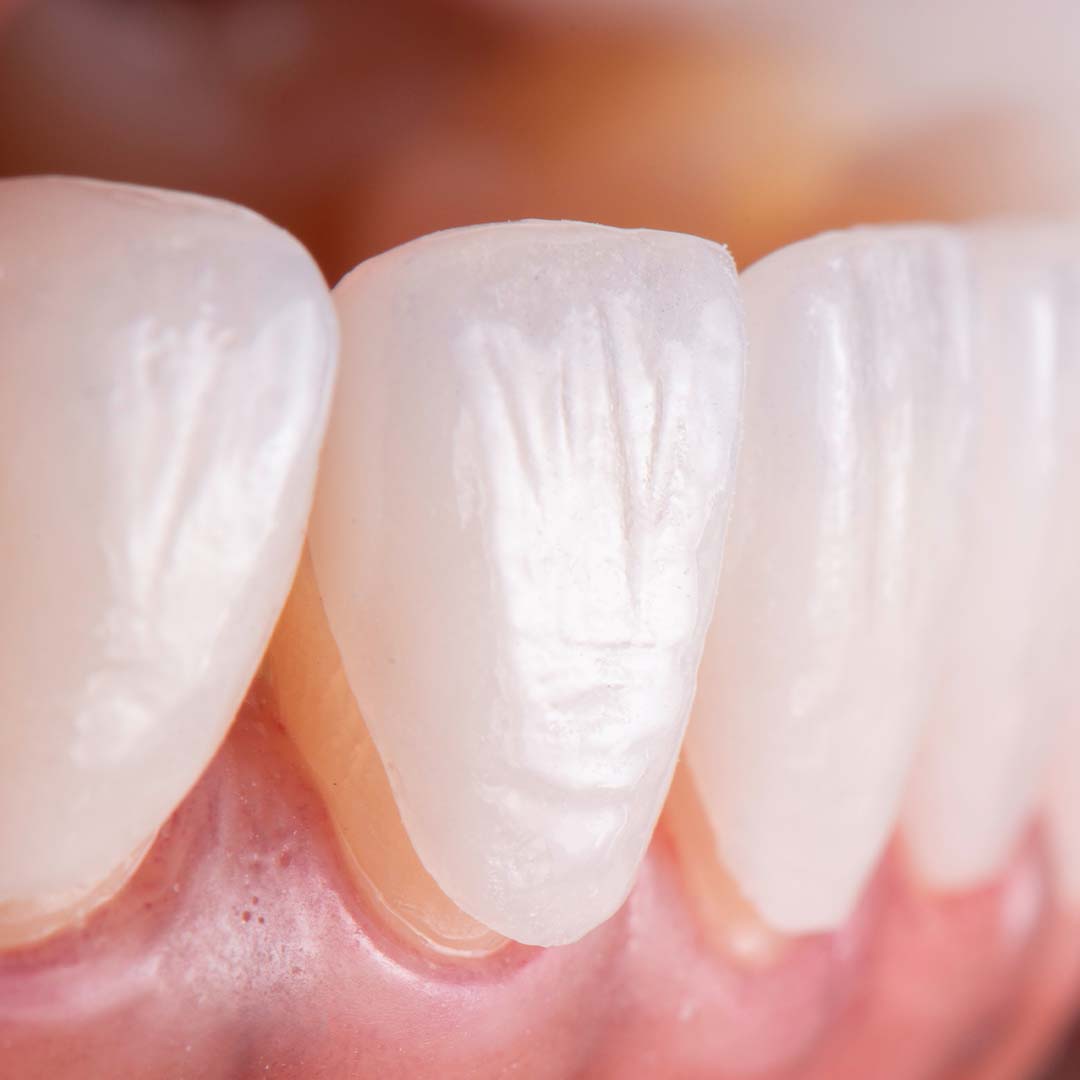Porcelain Dental Veneer
When porcelain is used in the production of dental veneers, it is referred to as porcelain dental veneer. Porcelain takes on a white color from the materials used in its production and is considered a biocompatible substance. It does not contain metals or harmful substances. Porcelain veneers help teeth appear much more natural and are commonly preferred among individuals who have experienced tooth loss or face issues like teeth discoloration. Porcelain veneers also aid in balancing the shape, size, and color of teeth.

How Are Porcelain Dental Veneers Applied?
For porcelain dental veneer placement, your teeth are first gently reshaped to accommodate the veneers. Then, impressions are taken of the prepared teeth, and these measurements are sent to a laboratory. The preparation of the veneers typically takes 1-2 weeks.
Once the veneers are ready, the dentist administers local anesthesia to ensure the patient’s comfort during the procedure. Next, the dentist reshapes the patient’s natural teeth to prepare them for the veneers, ensuring a proper fit. The dentist places the veneers on the teeth to assess their fit and color, making any necessary adjustments. Finally, the dentist completes the process by making any required modifications before permanently bonding the veneers to the teeth.
Dental Veneer Treatment Summary:
Number of Operations: 2-3
Operation Duration: 30-90 minutes per 10 teeth
Anesthesia: Local Anesthesia
Full Recovery: 15 Days
Hospital Stay: No Hospital Stay
Return to Work: Immediate
Longevity of Results: 10-20 Years
Differences Between Porcelain Veneer and Zirconium Veneer:
The primary difference between porcelain veneer and zirconium veneer is the material used. Porcelain veneers consist of thin porcelain layers that closely resemble natural teeth in terms of aesthetics, while zirconium veneers are made from a more durable material called zirconium.
Which Is Better, Porcelain Veneer, or Zirconium Veneer?
The choice between the two depends on individual needs and treatment requirements. Porcelain veneers provide excellent aesthetic results, while zirconium veneers are more durable. You can make your treatment choice in with consulting to your dentist.
How Long Does It Take to Complete Porcelain Veneers?
The time it takes to complete porcelain veneers typically depends on the condition of the teeth and the number of veneers being applied. It may require several appointments, including preparation, impression taking, and veneer placement.
How Long Do Porcelain Veneers Last?
With proper care and regular check-ups, porcelain veneers can last for many years. However, like any veneer, they may wear down or experience color changes over time.
Can Porcelain Veneers Break?
Porcelain veneers are quite durable but can break due to excessive trauma or habits like teeth grinding.
Is Tooth Reduction Necessary for Porcelain Veneers?
Yes, tooth reduction is necessary when getting porcelain veneers. A portion of the tooth is removed and prepared to ensure proper fit and aesthetics of the veneer.
What Is the Best Tooth Shape for Porcelain Veneers?
The ideal tooth shape for porcelain veneers depends on the shape of your face and other personal factors. For example, heart-shaped faces may look great with shorter, round veneers, while oval faces may suit square-shaped teeth better. Choosing a tooth shape that complements your face results in more satisfying aesthetics.
Does Getting Porcelain Dental Veneers Hurt?
Getting porcelain dental veneers typically doesn’t cause pain during the procedure since dentists often use local anesthesia. However, after the procedure, once the anesthesia wears off, you may experience mild discomfort or sensitivity, which is normal. There’s no need to worry in such a case because after certain dental treatments, it’s common to have slight discomfort for a few days, but it’s temporary.





















